- youtube
- bluesky
- Home
- About
- Costume Journal
- Membership
- Conference & Events
- Grants & Awards
- News & Social
In this week’s blog post, Janet Aspley, fashion historian, dressmaker, and a passionate bonfire society member, takes us behind the scenes of Lewes Bonfire Night, Sussex, the largest celebrated 5th of November Event in the world. Revealing the huge amount of work that goes into making lavish Tudor costumes for the celebration’s infamous torch-light processions and impressive pyrotechnic displays.
In modern times, November 5th, the date designated by a relieved James I to celebrate the thwarting of the Gunpowder Plot of 1605, is commonly celebrated across Britain with polite municipal bonfires and underwhelming firework displays. Not so in Lewes, the quaint county town of East Sussex, where thousands of residents process in costume through narrow, steep streets carrying flaming torches; dragging barrels of burning tar; and pulling a “Guido” cart, complete with kneeling effigy. The very conspirator that the town’s bloodcurdling “Bonfire Prayer” reminds us was “catch’d with a dark lantern and burning match” about to set light to “three score barrels of powder below, Poor old England to overthrow”. In a remnant of the town’s fiercely Protestant history, Lewes Bonfire also commemorates seventeen Protestant martyrs burned in the town during the reign of Mary I by carrying cross torches, each bearing the name of one of the seventeen. The town has seven Bonfire societies, and five Bonfire site, where they put on impressive pyrotechnic displays. For an hour or so, the night sky is as light as day. Huge “tableaux”, satirising political figures of the day are also pulled to the Bonfire sites, where they come to an explosive end.
Lewes Bonfire is a precious survival of the fairs, festivals and other celebratory events that were once common all over England. For the most part, these nights of licence, when rules were put on hold, alternative identities temporarily assumed and the topsy turvy embraced, died away as working class culture came under the twin pressures of industrialisation and non-conformist religion. Nevertheless, Lewes Bonfire is not the only surviving such event. It is, however, the best dressed.
Across the town, there is an astonishing level of skill, knowledge and invention as Bonfire Society members transform themselves, for the duration of November 5th, into lavishly clothed historical figures. Bonfire Society members make wigs, hats, headdresses, capes, kirtles and countless other items. They learn from books, patterns, YouTube videos, and most importantly, each other as skills are passed across and down generations. Costume enables a casting off of the workaday as, through these acts of creation, temporary identities are forged; a dentist, for example, becomes Henry VIII, and a registrar of births and deaths his Queen – it doesn’t matter which one, as long as she still has a head.
Costume traditions are foundational in the history of Lewes Bonfire. Processions involving representations of Guy Fawkes were first recorded in the town in the late seventeenth century. By the end of the eighteenth century, the town’s celebrations, mostly involving young working class men, were disorderly enough to raise alarm. Attempts to control the annual mayhem continued into the nineteenth century, and “Smuggler” dress, consisting of striped guernsey and white trousers, evolved to mask the Bonfire Boys’ identity from the “Enemies of Bonfire” who sought to curb its excesses. This is still the default attire of Lewes Bonfire, and Societies are distinguishable by the colours in their stripey jumpers. In 1847, a full-scale riot took place; this was the prompt for Bonfire to compromise by organising into a more acceptable, regulated event and the first Bonfire Societies were born. Each Society organised itself into costume groupings known as Pioneers. As David Wiles observes, the First Pioneers who lead the procession of the older societies wear the costumes of warriors exotic in time and place; some of these costumes have generated recent controversy. Second, Third and Fourth Pioneer groups focus on a particular historical period; as successive Societies pass by, the monks of the town’s Cistercian Priory, destroyed in the Reformation; participants in both English and American Civil Wars; and French Revolutionaries parade before the spectator’s eyes. The antiquity of these costume traditions can be judged through photographs in the archive of the local photography business, Edward Reeves Photography, which has remained in the same family, based at the same High Street location, since it was founded in 1858. This remarkable archive includes Victorian studio portraits of proud Vikings and Cavaliers, costume identities that survive to this day. Waterloo Bonfire Society, which I first joined in 2002, has four Pioneer groups: First, Warriors of Genghis Kahn; Second, Greeks and Romans; Third, Tudors; and Fourth, Victorian.
I am a proud member of Waterloo’s Third Pioneers and am present each October when the Bonfire Societies compete against one another in the Bonfire Council Costume Competition at Lewes Town Hall. There is nothing quite like the atmosphere in the changing room at the Town Hall on competition night. Quite apart from the fun and camaraderie created by the friendly rivalry between Societies, there is an element of the surreal. This year as I laced myself into Elizabethan dress, primping my ruff and adjusting my bonnet, my closest companions were the fierce Vikings of Cliffe Bonfire Society and the swaggering Buccaneers of Southover, while Celtic Warriors lurked in the background; only in Lewes! The competition is also an opportunity to be creative with props which wouldn’t be practical in the procession. This year, our Waterloo Tudor group included quite a menagerie, including a goose in Tudor bonnet, a swashbuckling monkey in tall hat and ruff, and an ermine in a coronet.
Although as I have mentioned, I am only one among many dedicated costume makers in the town, some elements of my costuming practice are common amongst Bonfire costume makers and may shed some light on what constitutes a sense of authenticity in Bonfire costuming. First, whilst any costume can be worn in Bonfire, and I myself have walked in the “fancy dress” section at the back of the Waterloo procession as a flamenco dancer and a highwayman (the fulfilment of a long held ambition to dress as a Pantomime Principal Boy, in over the knee boots and fishnet tights, previously thwarted by my inability to sing or act) the ideal costume is one that includes the wearer in a Pioneer Group. For the Societies, there is a dramatic impact in a whole group of members dressed in a particular theme. For the individual, there is a sense of pride, belonging and achievement: come November 5th, I will not be dressed as a Tudor; I will be a Bonfire Tudor.
Since my teen years, the early modern period of English history has been a passionate interest. Although my academic specialism as a dress historian lies across the Atlantic, my costuming has prompted a deep dive into the details of Tudor dress. For my most recent costume, I have used patterns from the Tudor Tailor book for shirt, bonnet and underpinnings. The ruff is constructed using techniques I learned on a weekend course at The School of Historical Dress. There is nothing unusual in this level of research amongst Lewes Bonfire costume makers, who will habitually be able to step outside of their everyday professions to engage in a knowledgeable conversation about dress in their chosen period. Nevertheless, we are not re-enactors. Bonfire costumes are created with impact in mind and a motivation to make our Society’s procession look great. I have often discussed a longing for a historically accurate linen kirtle in earthy tones or a nice white coif with a fellow Tudor; the conversation invariably ends with the conclusion: “It’s just not Bonfire”. Sparkle, embellishment and high colour contrast create the desired effect. For the first time last year I walked in the procession in a costume that had no farthingale. I just didn’t feel grand enough, and worse, walking down our steep High Street with a floor length skirt flapping around my ankles, rather than held away from them by hoops, was a constant trip hazard – particularly undesirable when carrying a flaming torch. This year I have made a farthingale from cotton canvas and steel boning, built to last.
Resourcefulness and repurposing are also part of the Bonfire costumier’s arsenal. One of the most impressive French hoods I have ever seen was an upturned plastic sun visor encrusted with faux jewels. Discarded family furs adorn Viking or Genghis Kahn costumes, and wellies covered in faux fur become warrior boots. The two costumes I have made this year both have elements of repurposing. The purple velvet doublet worn by Tamsin Wharton in our group photo is a military style jacket of the type fashionable in the late noughties and found in a charity shop. It was transformed by the addition of miles of braid and exaggerated puff sleeves; less is never, ever, more when making a Bonfire costume. The design for my own costume grew from a vintage tablecloth, bought on eBay. I love its folksy, cross stitch embroidery and had the utmost fun transforming it into a shirt. In both cases, the design of the costume emerged from these finds.
Bonfire footwear must be sturdy enough for the long walk in procession that often ends on a muddy Bonfire site, so farthingales and crinolines cunningly conceal walking boots and trainers. I also create my costumes with the risk of flammability in mind. I have found that upholstery fabrics can be heavy, so this year and last, I sought out bargain lengths of fabric with a wool composition, which is inherently flame retardant. Our local harberdashery shop, The Stitchery , does a brisk trade in both metallic trims and flame-retardant spray at this time of year. It doesn’t do to worry too much though, or to be too precious about smoke or fire damage, or about the scent of smoke and paraffin, which will still cling to the costumes when you get them out next year. A singe mark was clearly visible on the back of fellow Waterloo Tudor Sara Skillen’s stylish suede doublet as we watched the Waterloo fireworks in 2021; it was probably caused by the falling head of a spent, but still alight, torch.
Whilst Bonfire costumes are often battle scarred, they represent a considerable investment of time and money, and are expected to last. Costumes are handed down, lent, given away and sometimes sold on. To wear a costume made by a parent or grandparent is a matter of pride and for me, that role is reversed, since my daughter Martha Jane Smith, seen here channelling an Elizabethan fairy princess, made the Elizabethan Effiigy Bodies that I wear under my costumes. Her own childhood costume has been worn by the daughters of two friends and is now stored in my loft, awaiting a new wearer. Size adjustments are often necessary: I once made a front fastening costume bigger by ignoring its hooks and adding a placket and loops, laced with a lurex shoelace. In fact, I would contend that there is no Bonfire costume fitting problem that can’t be tackled with a sparkly shoelace!
Lewes is a remarkable town. Its custodianship of the traditions of Bonfire are a matter of intense pride for me, and I am sure for my fellow Bonfire Society members, many of whom work year round, planning and fund raising to make the 5th a success. Costume making is just one of many skills needed to make Bonfire happen. I am honoured to be able to contribute my costume making skills to the deep, wide pool of talent in this place. I hope that by providing an insight into my own practice, I have helped celebrate my costume making Bonfire Brothers and Sisters.
David Wiles. The Lewes Bonfire Festival. New Theatre Quarterly, Volume 12 , Issue 46 , May 1996 , pp. 177 – 191
Steve Roud. The English Year. Penguin Books, 2008.
E. P. Thompson. The Making of The English Working Classes. Penguin Classics, 2013.
James Sharpe. Remember, Remember The Fifth of November. Profile Books, 2005.
With thanks to Lee Christmas, Eamonn Burke-Duggan and Edward Reeves Photography for providing images for this blog post. Tom Reeves has kindly provided photographs from recent Costume Competitions for this piece, and whilst these focus on my fellow Tudors, examples of many more costumes can be found among the client galleries on his website.
Janet Aspley was awarded her PhD by University of Brighton in 2020. Her thesis, Hillbilly Deluxe: Male Performance Dress and Authenticity in Country Music, 1947 – 1994 focuses on the changing meaning of the iconic “Nudie suit” in country music. Alongside her research and Bonfire Tudorising, she makes Liberty print western shirts. Her label, Dandy & Rose, was featured by Liberty in their Meet the Makers series in 2020.
Follow Janet on Instagram and Twitter.
To read more Costume Society blog posts about historical costume and fancy dress click here.
The Costume Society is a lively, friendly organisation whose aim is to promote the study and preservation of historic and contemporary dress. If you would like to join our passionate community become a member today.
Image gallery
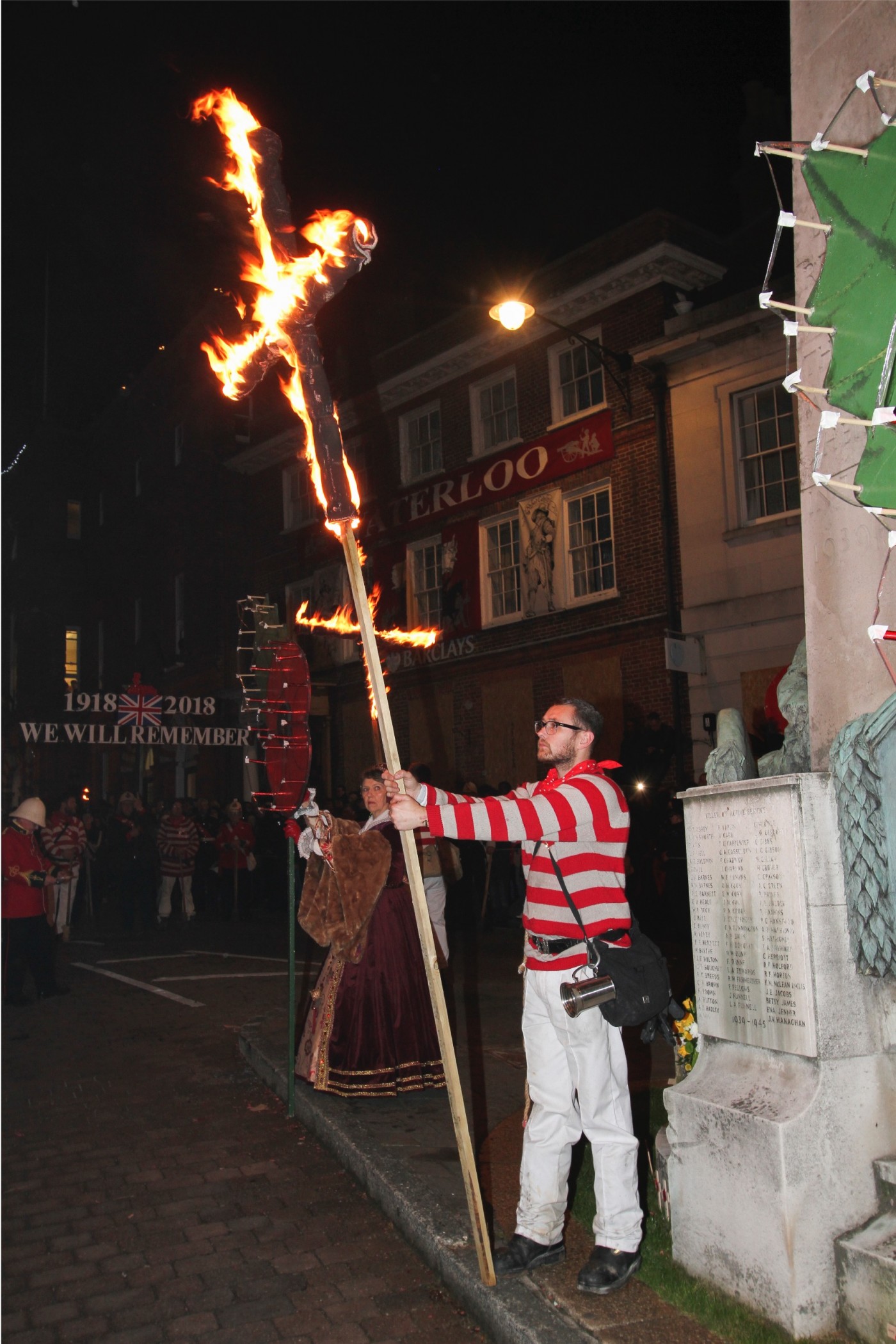
A man dons traditional "smuggler" dress, Image credit: Eamonn Burke-Duggan

Image credit: Eamonn Burke-Duggan
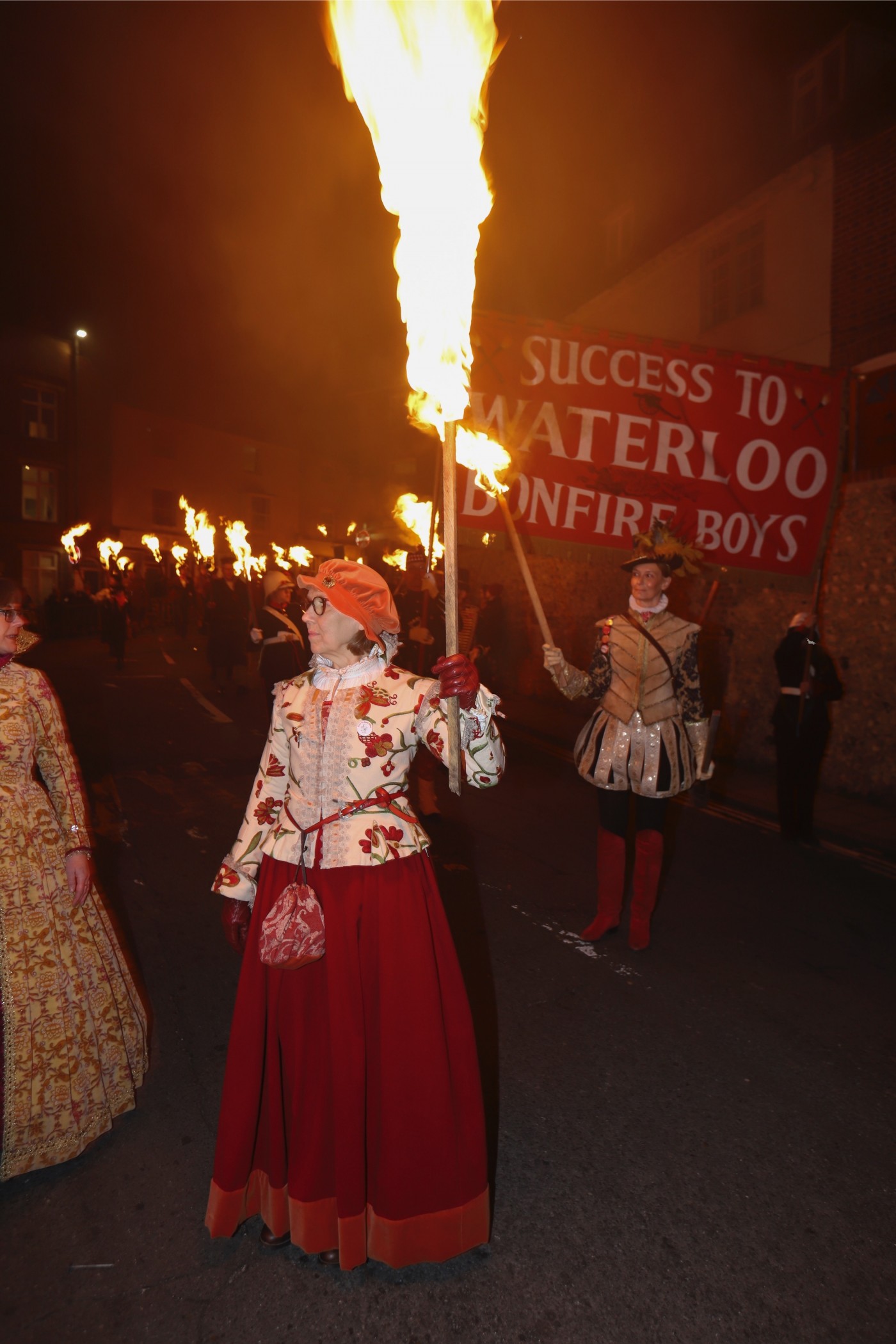
Image credit: Eamonn Burke-Duggan
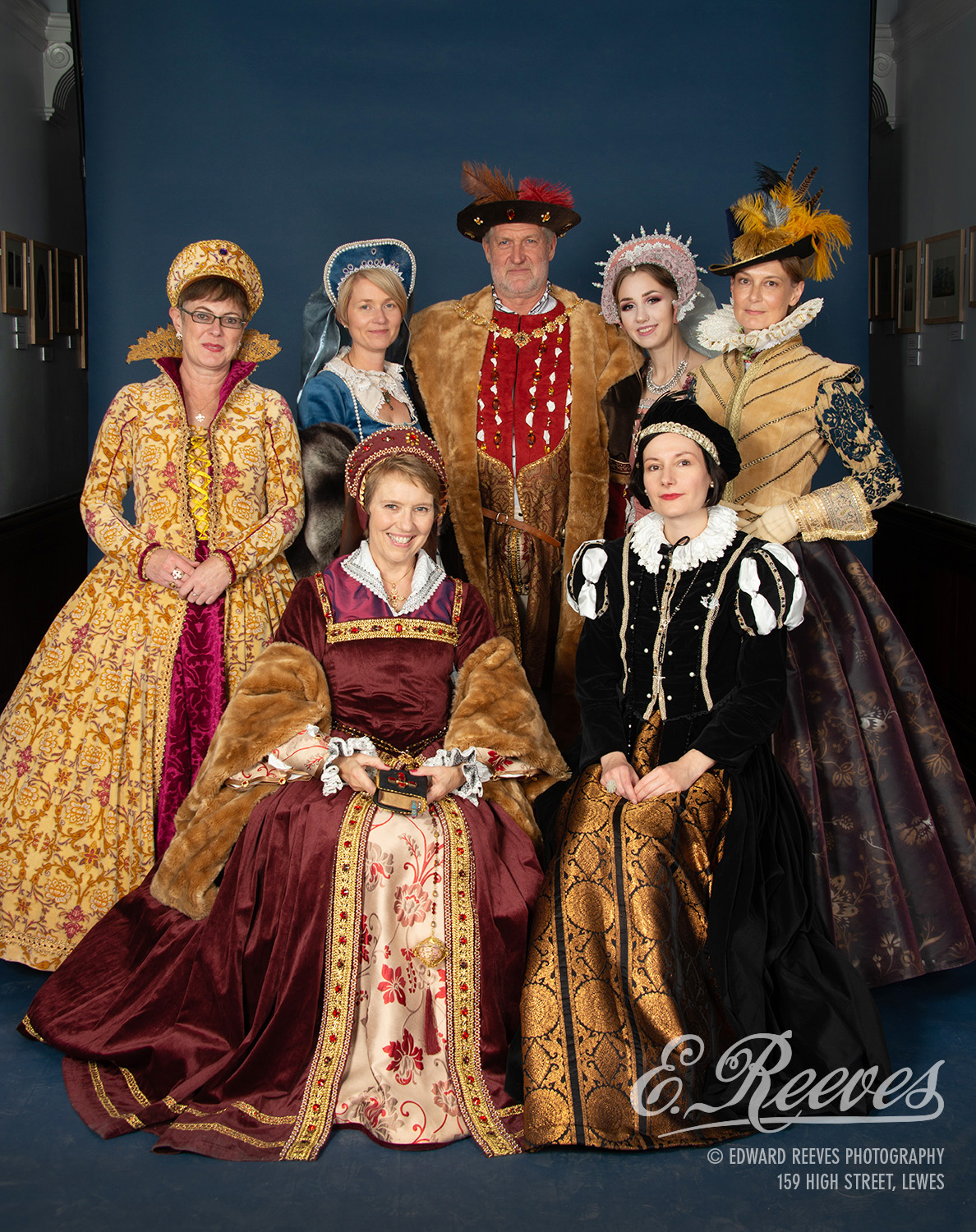
Image credit: Edward Reeves photography

Image Credit: Lee Christmas
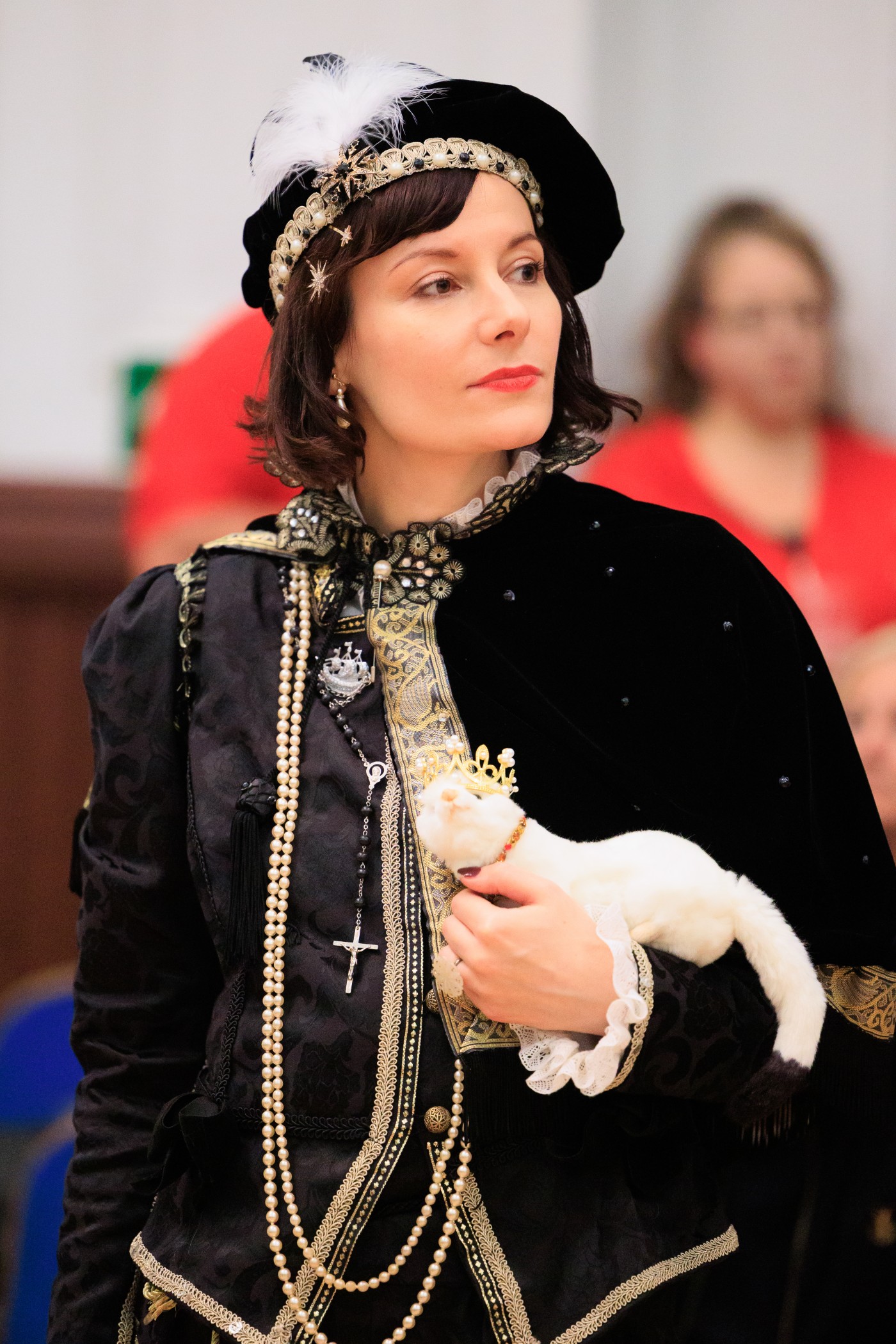
Image Credit: Lee Christmas
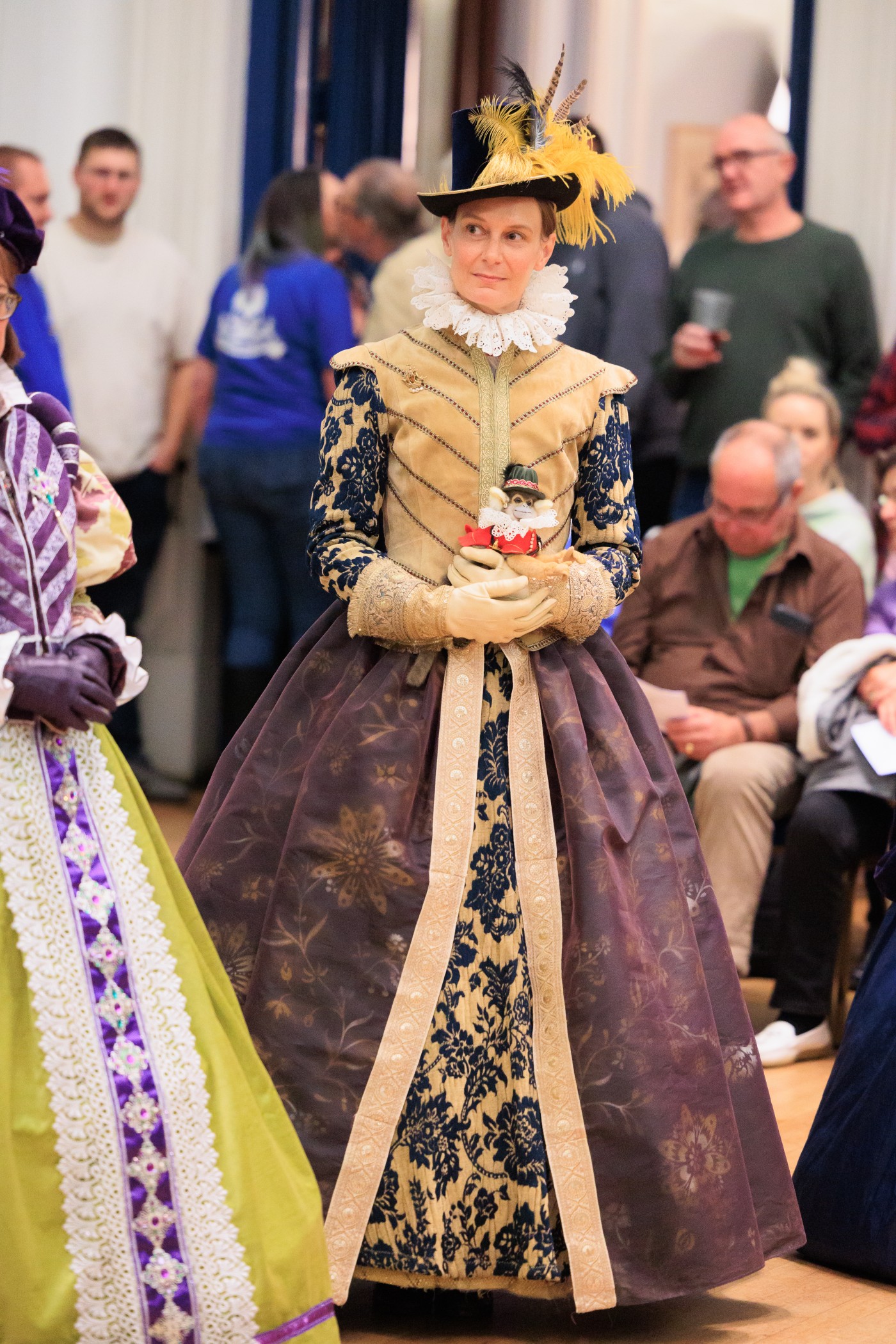
Image Credit: Lee Christmas

Image Credit: Lee Christmas
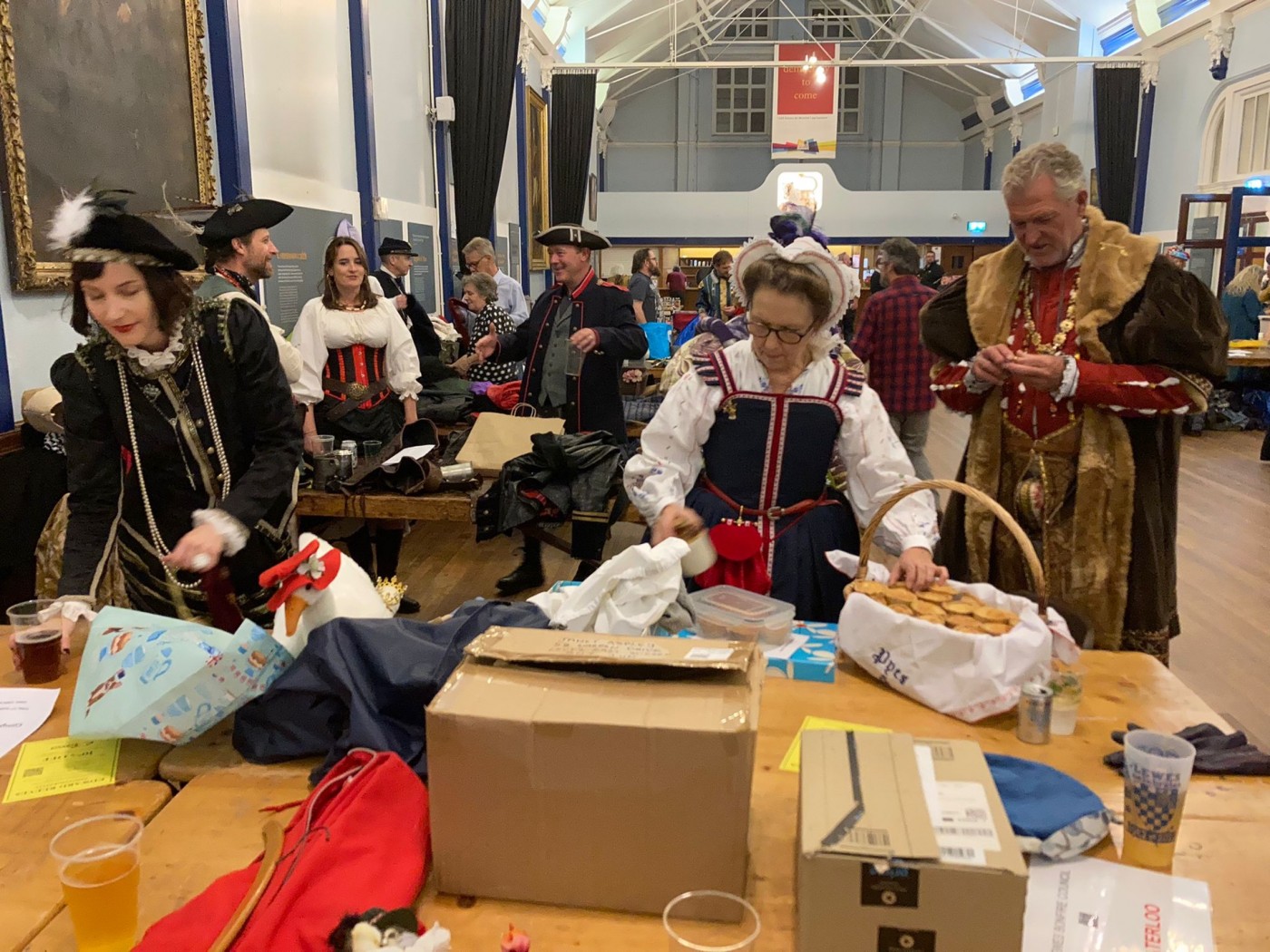
The bustling changing room, Image Credit: Janet Aspley

Bodies and Farthingale, Image Credit: Janet Aspley

Costume front, Image Credit: Janet Aspley
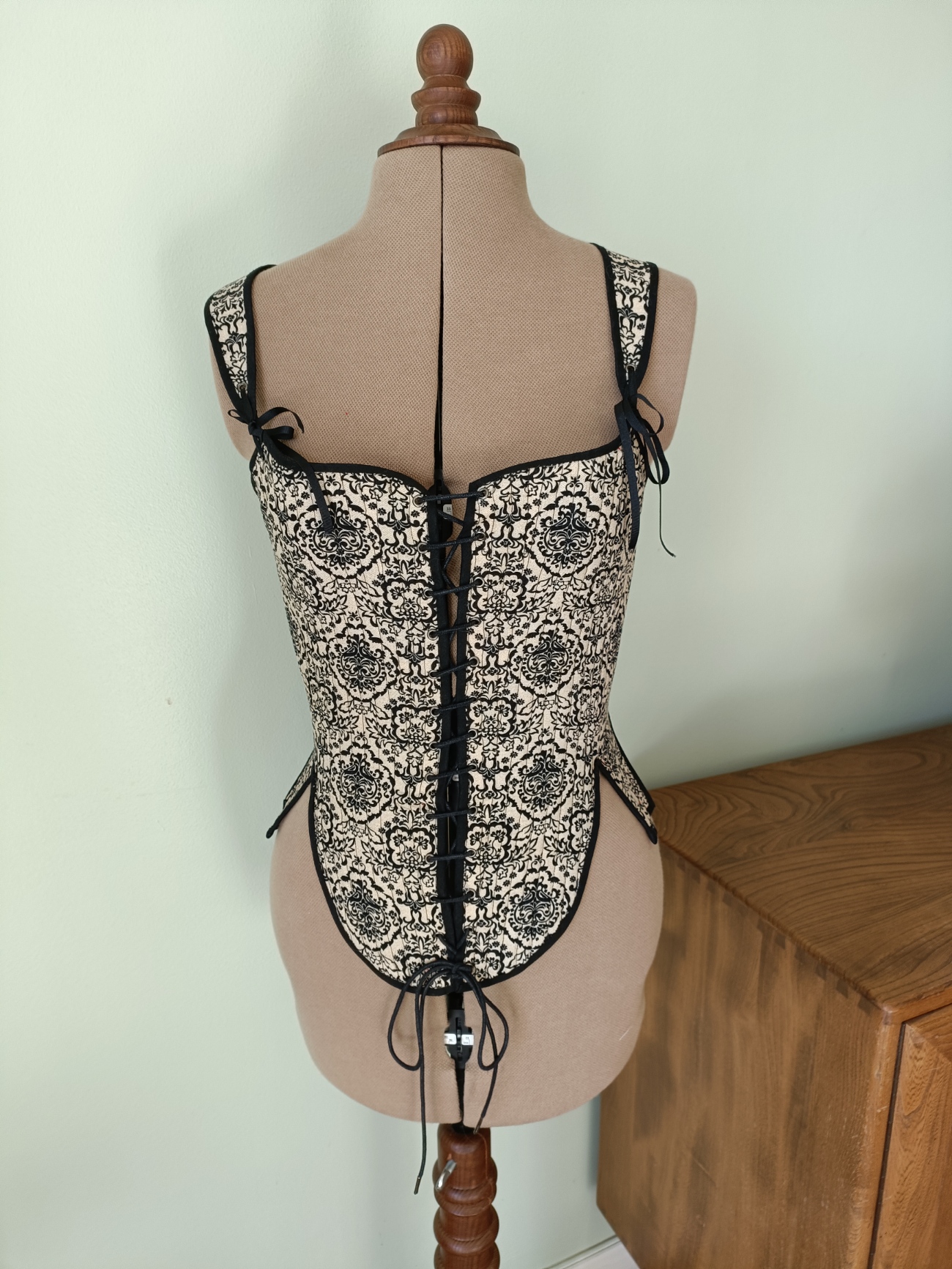
Elizabethan effigy bodies, Image Credit: Janet Aspley